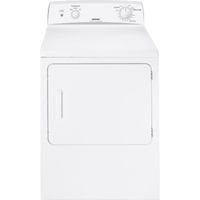Hotpoint dryer not heating. To whirl clothes around tumbling at speed of course. What might you do when your dryer isn’t heating properly? If you’re like most people, you’d call a repairman, right away.
However, wait Don’t do that just yet. You will learn how to fix a Hotpoint dryer that won’t heat up in this tutorial. The dryer’s thermostat and heating element will be changed.
The information provided here is specifically for a Hotpoint dryer, but it may also apply to similar makes and models, so check your manual before doing what you read here.
Hotpoint dryer not heating
A Hotpoint dryer that isn’t heating up probably has you thinking about calling a repairman. Maybe you’ve already had some estimates, but they’re all too expensive, right.
Perhaps you should try to solve the problem yourself and avoid those high-priced bills. We’ll learn you how in this article tutorial. There are only a few parts and a screwdriver needed no special tools needed.
Defective Thermal Fuse
A thermal fuse is a safety device that is meant to prevent a dryer from overheating. It is located on the blower housing or in close proximity to where the heat is generated such as near the element in electric dryers and at the burner for gas models.
If the fuse has been tested for continuity, it should exhibit a continuous electrical path through it when good because this means that electricity will be able to flow freely.
When an object breaks contact with these points, whether that thing happens to be your finger or just some nearby lint, then no electricity will flow and your fuse has “blown”.
To test this device for continuity you will need a multimeter. Be aware that if your fuse has blown, they are oftentimes connected to issues with improper venting outside of your house which could result in more serious problems in the future! As always, always check the dryer’s venting when replacing a blown fuse.
Igniters do not have continuity
The igniter is one way that your dryer functions. If the igniter is not working, it will prevent your appliance from running properly.
To determine if the igniter has become damaged, use a multimeter to test it for continuity. If the igniter does not have continuity, it needs to be replaced in order for the dryer to work properly again.
Gas valve coils are defective
Gas dryers have two or more gas valve coils. The gas valve coils open the gas ports to allow gas to flow freely into and out of your dryer’s burner assembly.
If a gas valve coil malfunctions, your clothes will not dry. To determine if one or more of the gas valves is history, check the igniter.
If the igniter glows and fails to ignite the gas, it’s a sign that something has gone wrong with your gasifier coil. Replace them assets, if they are defective, with our handy kit that simplifies rewiring.
Faulty Heating Element
The heating element warms the air before it enters the dryer drum. As time passes, it may burn out and if this happens, your dryer will cease to provide hot air.
Use a multimeter to test the continuity of the heating element by touching one probe to each of its wires and then take note of whether or not you have received a readout on your meter. If there is no reading, replace it because the heating element has stopped working properly.
Replace the Flame Sensor
When a dryer doesn’t heat, the flame sensor is frequently at fault (the same holds true for electric dryers). If you know how to fix wiring or have an electrical background, you may want to test the igniter and thermal fuse first.
Use a multimeter to test the continuity of the flame sensor at room temperature. If it doesn’t have continuity at room temperature, you should replace it. To remove the flame sensor.
An incoming power issue
A dryer won’t heat when there’s a problem with the power to it. A typical dryer uses 2 legs of 120 volts of AC power.
This adds up to 240 volts. It’s not uncommon for only one fuse or breaker to trip, leaving the dryer able to run but unable to heat. Using a multimeter, check the fuse box or circuit breaker, and measure the voltage at the outlet.
Timer faults T
If the dryer doesn’t heat, the timer might be defective. However, this is very rarely the case. Before replacing the timer, check all the more commonly defective parts.
If you determine that everything else is working properly, test the timer by utilizing a multimeter and consulting with its wiring diagram. When any of your tests prove positive, replace the electrical board.
The main control board is faulty
There are many possible components that might be defective. Few though they may be, they need to be checked because a single one of them can cause an entire system to fail.
if the main control board is defective it’s worth considering replacing it before all else just because it cannot be easily tested and so must be tested in conjunction with the rest of the components.
Related Guides

